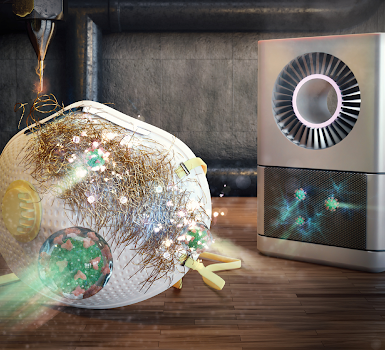Airborne transmission of SARS-CoV-2 has been recognized as an important route for spreading COVID-19. SARS-CoV-2 aerosols could suspend, accumulate, and remain infectious in the air for a long duration up to hours. To reduce the transmission of SARSCoV-2 through aerosols, physical barriers like facemasks and indoor air filters have been successfully implemented. Electrospinning has emerged as a promising nanotechnology for developing non-woven, ultrafine nanofibrous membranes that are excellent for removing aerosols.
With an ultrafine fiber diameter (~ 300 nm) and a small pore size (~ 2 μm), the optimized electrospun nanofibrous membranes caught up to 99.9% of the aerosols of the murine hepatitis virus A59 (MHV-A59), a coronavirus surrogate for SARS-CoV-2. We are one of the very first research groups who challenged air filters with real coronavirus aerosols. In addition, rose bengal was used as the photosensitizer for membranes because of its excellent reactivity for generating virucidal singlet oxygen, and the membranes rapidly inactivated 97.1% of MHV-A59 in virus-laden droplets only after 15 min of desk lamp irradiation. Singlet oxygen damaged the virus genome and impaired virus binding to host cells, which elucidated the mechanism of disinfection at a molecular level. These studies have been published in Environ. Sci. Technol. Lett., Environ. Sci. Tech., and ASC Environ. Au (as the front cover).


